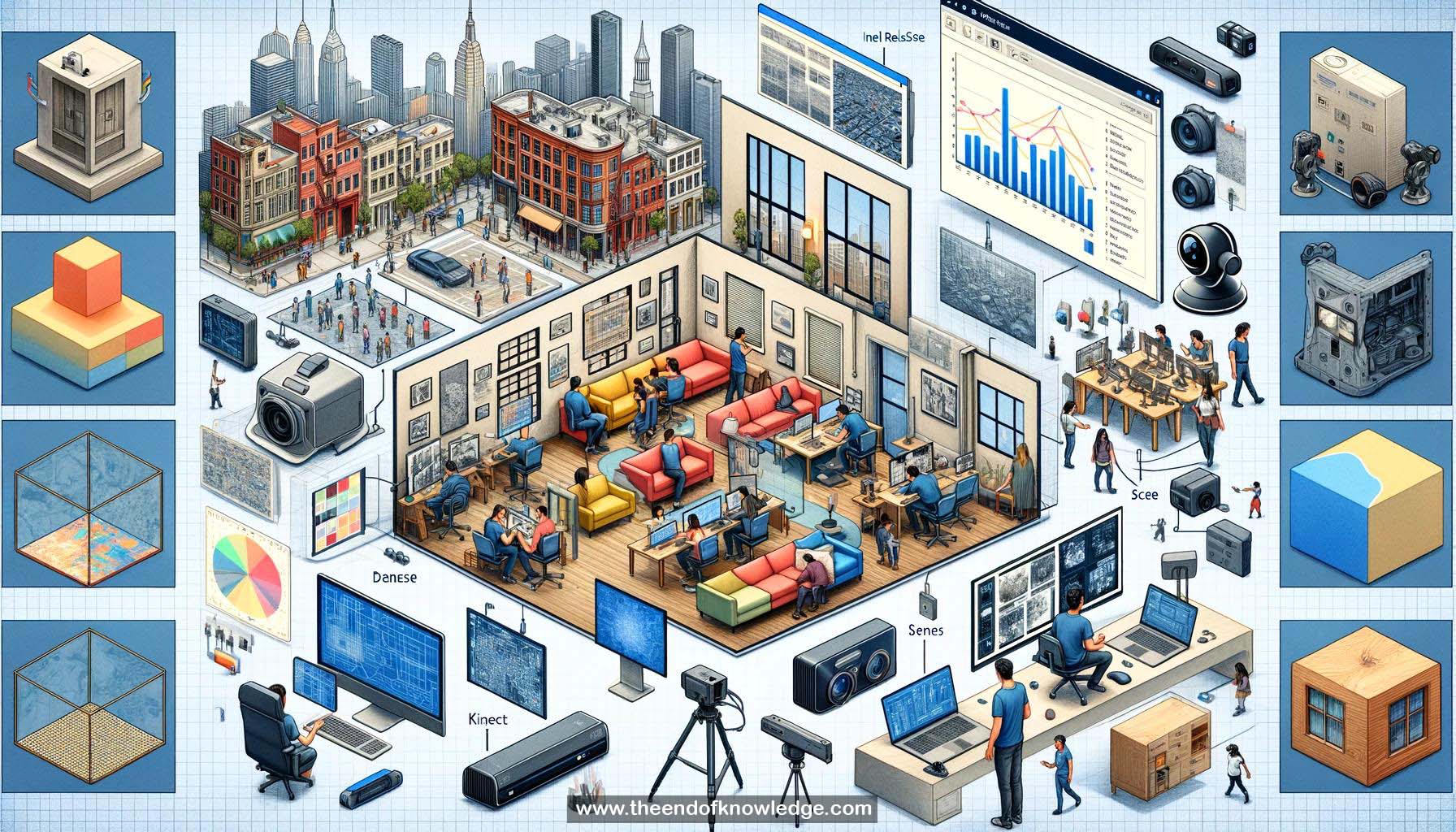 >
>
Concept Graph & Resume using Claude 3 Opus | Chat GPT4o | Llama 3:
Resume:
1.- SunRGBD: A large RGB-D scene understanding dataset and benchmark suite introduced by Princeton researchers.
2.- Scene understanding: A crucial but challenging computer vision task that benefits from RGB-D sensors.
3.- Existing RGB-D datasets: Too small (e.g. NYU) to train data-hungry algorithms and mostly have only 2D labels.
4.- SunRGBD size: Over 10,000 images, comparable to PASCAL VOC dataset.
5.- SunRGBD sensors: Captured with Intel RealSense, Asus Xtion, Kinect v1 and v2, each with different attributes.
6.- Dense annotations: 2D segmentation, 3D bounding boxes, object orientation, and room layout labeled for each image.
7.- Data collection: Challenging, requiring extensive effort to capture RGB-D images across many locations worldwide.
8.- Annotation tools: Custom 2D and 3D interfaces used to densely label objects, orientations and room geometry.
9.- Object categories: Diverse set of indoor objects, with chair being most common. Can help with furniture selection.
10.- Benchmark tasks: Evaluates 6 scene understanding tasks - classification, segmentation, 2D/3D detection, orientation, layout.
11.- Scene classification baselines: Deep learning features outperform hand-crafted ones. RGB-D improves over just RGB.
12.- Semantic segmentation: Predict per-pixel object category. Nearest neighbor and optical flow baselines evaluated.
13.- 2D object detection: Provides bounding box and category, but inadequate for reasoning about object use.
14.- 3D object detection: Outputs 3D location, dimensions and orientation - key for understanding object interactions.
15.- Room layout estimation: Infers 3D geometry of walls, floor, ceiling. Challenging due to complex real-world room shapes.
16.- Layout baselines: Convex hull, Manhattan box assumptions compared to single-view geometry approach.
17.- Layout evaluation: 3D free space IoU used instead of treating it as 2D segmentation problem.
18.- Holistic scene understanding: Joint prediction of object bounding boxes and room layout.
19.- Sensor details: RealSense has low raw depth quality improved by frame averaging. Kinect v2 is more accurate but with missing depth.
20.- Additional data: Hand-selected distinct frames from Berkeley 3D Objects and SUN3D datasets added and re-annotated.
21.- Object orientation: Estimate 3D object pose, important for understanding how to interact with objects.
22.- Object distribution: Dataset has naturalistic, long-tailed category distribution. Many examples of chairs, sofas, tables etc.
23.- Detection metrics: Standard precision-recall for 2D and 3D bounding boxes. 3D free space IoU also proposed.
24.- Free space evaluation: Considers objects and room together - space inside room but outside objects.
25.- Holistic understanding approaches: Four simple methods to combine 3D object detections and room layout. Details in paper.
26.- Limitations: Each scene represented by 2-3 images without overlap. Exploring multi-view RGB-D is future work.
27.- Funding: Project supported by Intel gift funds. Data and code released to public.
28.- Data gathering interfaces: Laptop on cart, sensors on stabilizers, batteries in backpack formed portable capture rig.
29.- Labeling effort: Amazon Mechanical Turk workers did initial 3D annotations, later verified by the researchers.
30.- Impact: Provides data to fuel advances in RGB-D scene understanding algorithms; can also aid interior design applications.
Knowledge Vault built byDavid Vivancos 2024